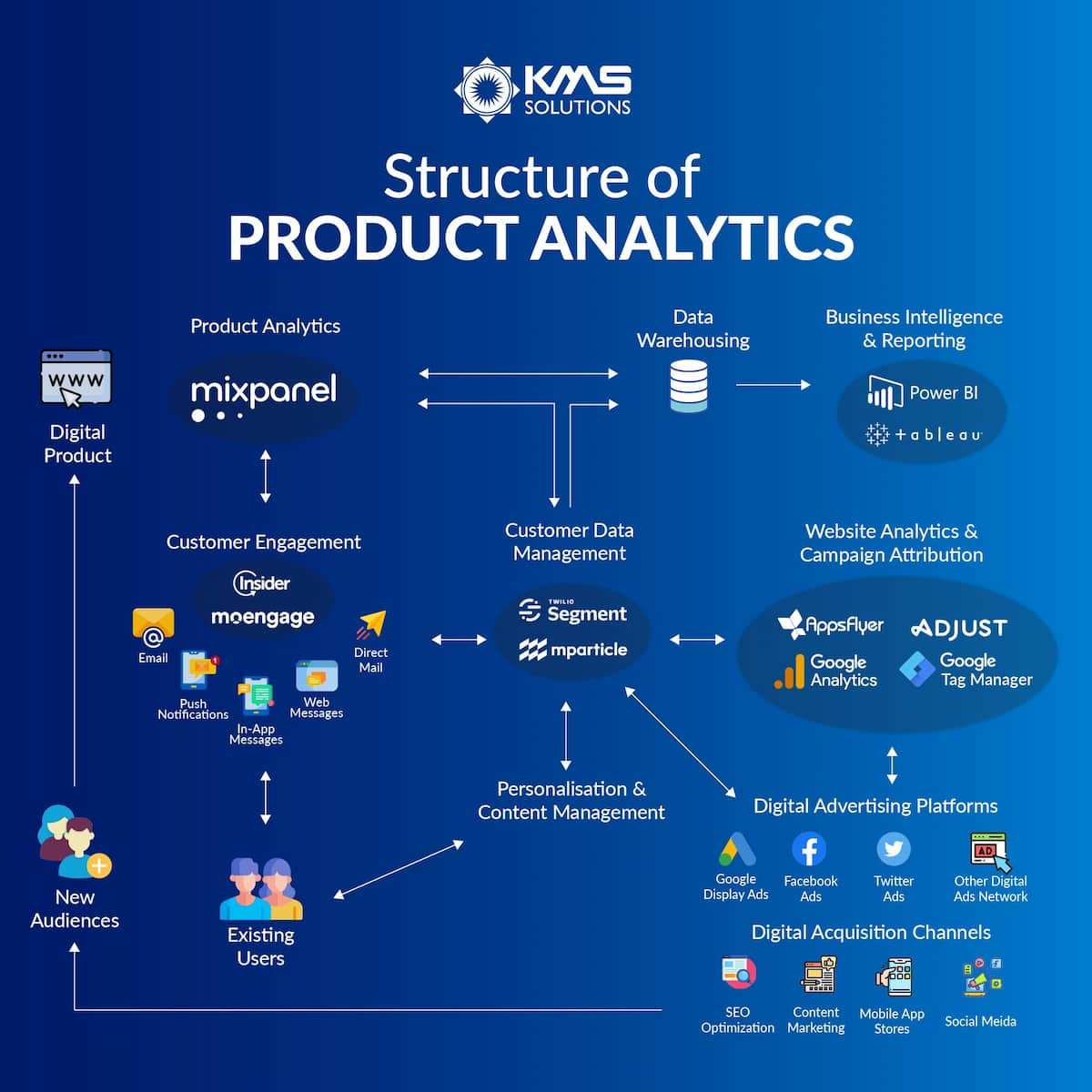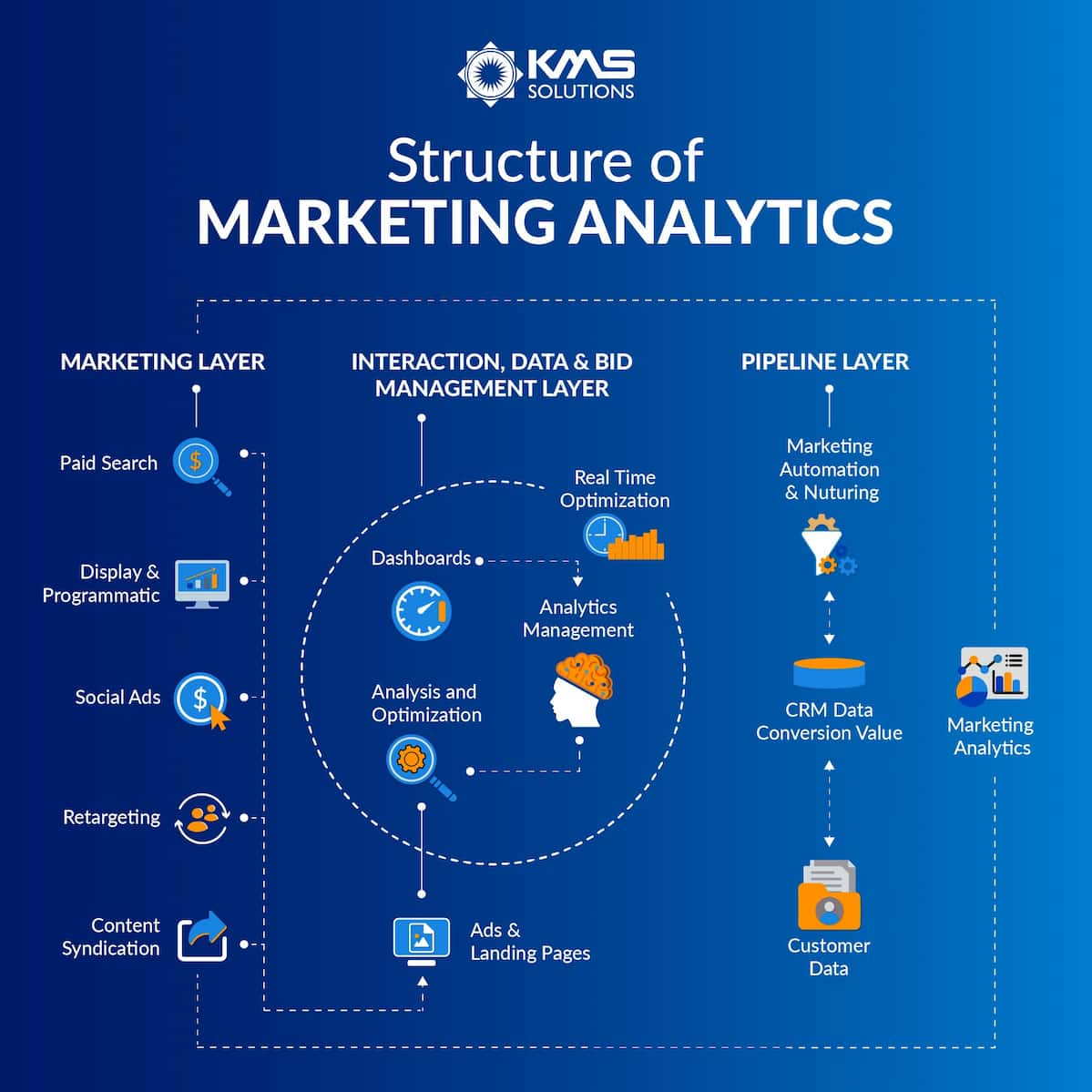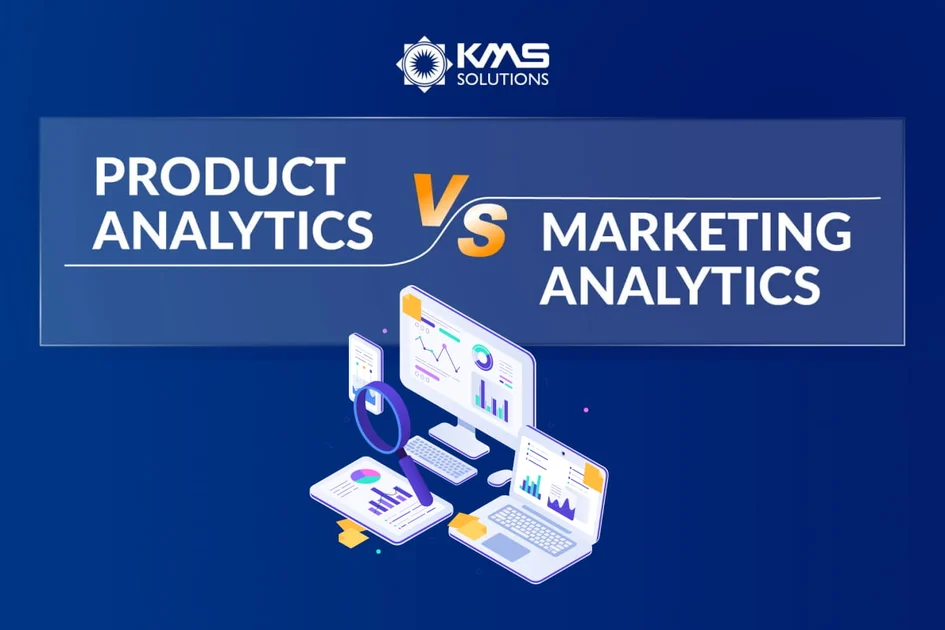In today’s data-driven world, businesses need to have a solid understanding of their customers and how they interact with their products and services. To be successful, companies need advanced data that give the complete picture of product and marketing innovation.
As many companies move towards digital transformation, the marketing and product teams must work closely together to achieve the company’s overall objectives. Besides product-tailored analytics that help to discover why specific metrics are decreasing, nowadays, some organisations have already leveraged marketing analytics to “growth hack” to identify effective marketing campaigns and keep customers engaged over time.
Understanding data from marketing analytics and product analytics serve different purposes and can be combined to ensure business growth; it’s necessary to identify and have a proper combination strategy.
The Differences between Product Analytics and Marketing Analytics
1. How Product Analytics Work

Product analytics is the process of gathering and analysing data about the customer journey and how they interact with products through embedded tools. From that, companies can understand users’ real thoughts, identify patterns and trends and make data-driven decisions to improve the product.
By using product analytic tools like Mixpanel or Amplitude you can collect data from various sources such as mobile apps and other digital channels to answer questions like:
- How frequently are customers using the product? What features are they using the most?
- How are your potential users? And how do their behaviours differ from other users?
- Are there any pain points or areas for improvement in the user experience?
- What are the key drivers of user engagement and retention?
With features like a powerful segmentation engine, user cohort trends, and on-demand deep analysis of user behaviour, product analytics software provides advanced data, which can be time-consuming to collect and analyse, to help you make improvements or additions to the product effortlessly.
Read more: Key Features and Integrations of Product Analytics Tools
2. How Marketing Analytics Work

Marketing analytics, on the other hand, is the practice of using data related to a company’s marketing activities to evaluate the effectiveness of a company’s marketing efforts, identify areas for improvement, and make data-driven decisions to optimize future campaigns.
Marketing analytics typically involves using tools such as Google Analytics (GA), Adobe Analytics, or HubSpot to collect data from various sources such as email campaigns, social media, paid advertising, and other marketing channels. The software can be used to answer questions such as:
- How many leads or sales did a particular marketing campaign generate?
- Which channels are driving the most traffic or conversions?
- What is the return on investment (ROI) for each marketing campaign?
- How are customers responding to different messaging or offers?
Among all, GA is undoubtedly the king of marketing analytics solutions and was designed to understand the first part of the user journey: traffic source, number of page views, time on site, etc.
3. How Does Google Analytics 4 (GA4) Change the Concept
With the introduction of Google Analytics 4, the technological gaps between marketing analytics and product analytics shrunk considerably.
As a significant update to Google’s popular analytics platform, it concentrates on event-based tracking rather than page-based tracking. In the past, Google Analytics tracked interactions on a website based on page views. With GA4, events such as clicks, video views, and other interactions are tracked instead. This modification allows businesses to track user interactions more accurately, giving them a better understanding of how users are engaging with their website or app.
GA4 also introduces new reports that focus on customer lifecycle analytics, providing businesses with a more comprehensive view of the user journey. These reports include metrics such as user engagement, user retention, and lifetime value, giving businesses a better understanding of how users are interacting with their products over time.
How to Combine Product Analytics with Marketing Analytics?
With the combination of marketing and product analytics, you can get rich behavioural data that helps reach the next wave of users, develop digital product innovation, and provide tailor-made experiences. Here’re tips to get it appropriate:
1. Provide a seamless user experience
At first, you may only have partial visibility into the user journey. Blind spots caused by disconnected data and missing information put you at risk of losing potential users along the way. Attaining complete insight into the customer experience – from acquisition to engagement and retention – is critical to developing a compelling digital product and a marketing plan that provides genuine value to your consumers.
Marketing attribution data analytics software gives you a comprehensive picture of users before they even download your app. It often begins with:
- Gaining knowledge of the complete conversion process: Knowing where customers came from and how they were reached may provide crucial, preliminary information about the user personas interacting with your app.
- Understanding which touchpoint they’d like to perform right after logging in to an app can serve as an indicator of what they expect to see first.
- Knowing which channels, campaigns, ad sets, and creative variations can bring the most valuable customers to your app (usually based on LTV and ROAS metrics).
After users access the product, in-app events analysis gives them information about their engagement level and LTV. By combining this marketing analytics data with product analytics, you can see how customers interact with your digital products (e.g. the features that are preferred most, customers’ last five purchases, a forecast of their next twenty, etc.)
2. Understand customer needs
Imagine how you, as a customer, would like a brand to connect with you and what an ideal user experience might look like. This will often require growth marketers and product managers to deliver personalised journeys for separate personas based on attribution data, and then employ the appropriate engagement techniques to increase conversions.
By integrating data from product and marketing analytics tools, you can identify user segments that are most engaged with your products and marketing activities. Then you can run a marketing campaign to send personalised messages offering users their preferences. For instance, if a user has spent a lot of time searching for a T-shirt in a retail app, businesses could send them an email with a personalized offer or recommendation related to that product.
3. Know user drop-off points
Dealing with customer churn and figuring out where you start losing prospective customers are crucial for your mobile app growth. As a growth manager, you must remain on top of attribution data: know what’s causing uninstalls, recognize where users are, and what metrics are affected.
To optimise user experience, grow engagement with new features, and retain users over time, you will need to measure the end-to-end engagement rate of key in-app events. Sometimes, even a small change in a feature that seems to be minor can completely change the way consumers interact with your app.
4. Move in the right direction at the beginning
For every project, time is important. Running marketing campaigns on a large scale will help you save a lot of time and money if you can shorten the time between launching a campaign and having actionable insights on users’ LTV.
Innovative marketing analytics tools that apply sophisticated machine learning technology can predict long-term performance in just one day after a consumer installs the app. This facilitates quicker decisions on where to allocate marketing resources for the most return on investment (ROI).
Moreover, you can personalise your marketing and communications strategy depending on in-depth digital product intelligence and predictive analytics models that evaluate users’ previous actions.
This means you will need to create tailor-made in-app notifications or messages for different user segments based on their propensity to convert to be more relevant than ever to your customers.
Let’s Combine Google Analytics with Mixpanel!
It’s obvious that marketing analytics and product analytics live in a symbiotic relationship and cannot replace each other. When both product and marketing teams are equipped with the proper tools, it generates a cycle of sustainable positive growth for the entire corporation.
Marketing can use GA to optimise marketing campaigns to acquire new users, giving product teams a larger user base to discover new ways to enhance engagement, conversion, and retention. Organisations can then identify potential users by applying Mixpanel and turning them into advocates. Similarly, they can identify users who are likely to drop off and offer a different set of marketing and product experiences to reduce churn.
Since many organisations have applied GA widely nowadays, integrating it with a product analytics tool like Mixpanel can help increase knowledge about customers and improve their experience.







